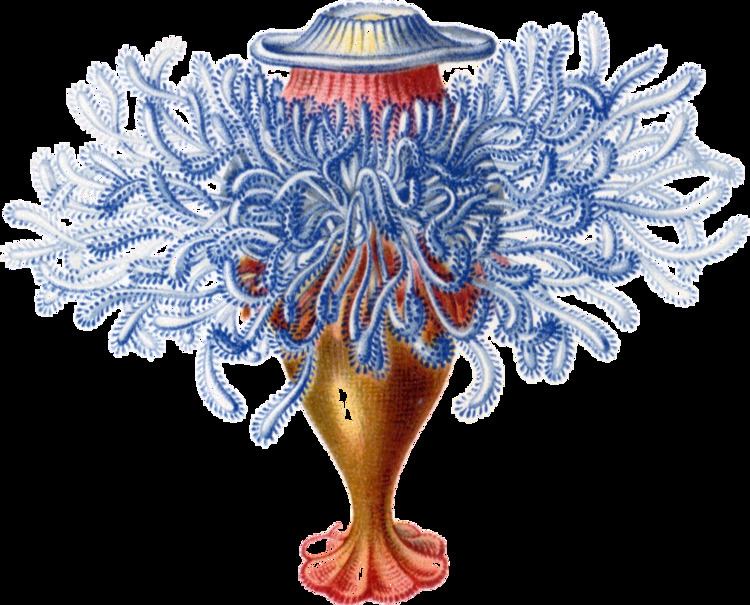Kingdom Animalia Family Porpitidae Phylum Cnidaria Order Anthomedusae | Class Hydrozoa Genus Porpema
Lamarck, 1801 Rank Species | |
 | ||
Similar Anthomedusae, Chondrophore, Capitata, Porpita porpita, Porpita | ||
Porpema prunella top 5 facts
Porpema prunella is a marine species of hydrozoan organisms within the unispecific genus Porpema that consists of colonies of zooids. The species is thought to be related to the other chondrophores, which include Velella and Porpita. Very little is known about this species, as there have been no confirmed sightings since its discovery in 1801 and naming by Haeckel in 1888. Being in the chondrophore group, it is likely that its behaviour is similar to the other species of the genera in the family. However there are also serious doubts as to its very existence. Nevertheless, A.K. Totton created the chondrophora order to accommodate three uncategorised genera, suggesting it may still exist.
Contents
Description and characteristics
The Porpema genus was described by Lamarck in 1801. The sole reported subsequent observation of a member of the species was by Haeckel in 1888. He had mistakenly placed several illustrations of the species from different views and stages of its life cycle on siphonophorae, as the chondrophores were originally placed along with the Siphonophores. However simple conclusions about the species can be made from these illustrations and the relationship between the other members of Porpitidae, as all of the chondrophores have features common to all species.
All chondrophores possess small tentacles that are known to cause minor irritation to human skin. They live at the surface of the open ocean, and are colonies of carnivorous, free-floating hydroids whose role in the plankton community is similar to that of pelagic jellyfish. The structures that cause their buoyancy – floats – are gas-filled membranes in other chondrophores. The floats are not obvious in this species from Haeckel's description, and have not been formally described, although the strange hat-like structure on the hydrozoan's aboral side may have this function. The hydroid colony itself closely resembles the tentacles of a scyphozoan; however, each tentacle structure is an individual zooid, which may consist of a medusa or a polyp. Each strand consists of numerous branchlets, which all end in stinging nematocysts.
The species is considered to be neustonic, passively drifting on the surface of the sea. A single mouth is located on its underside, and it appears to be re-orientable and movable. The mouth is used for both the intake of prey and the expulsion of wastes.
